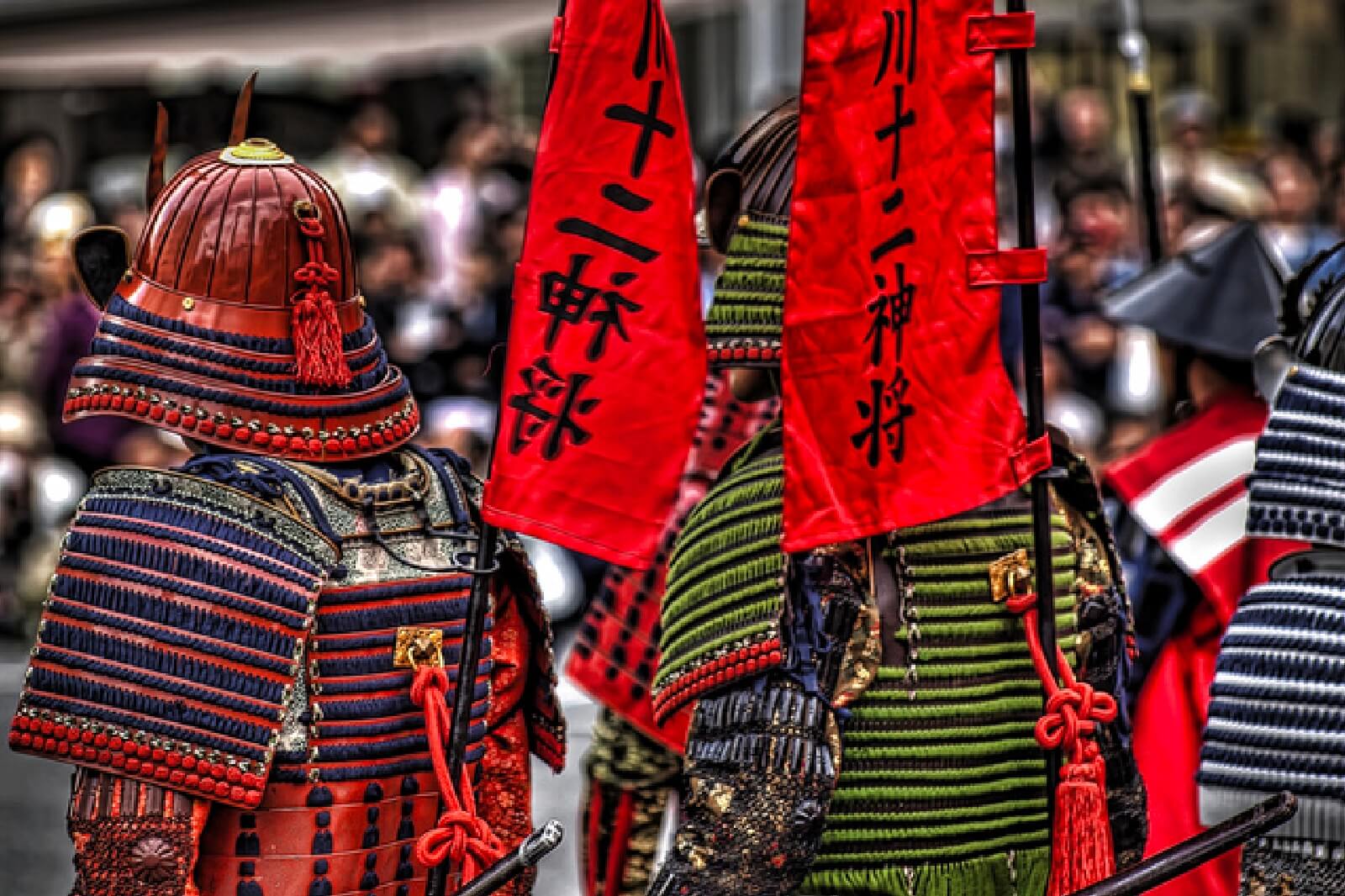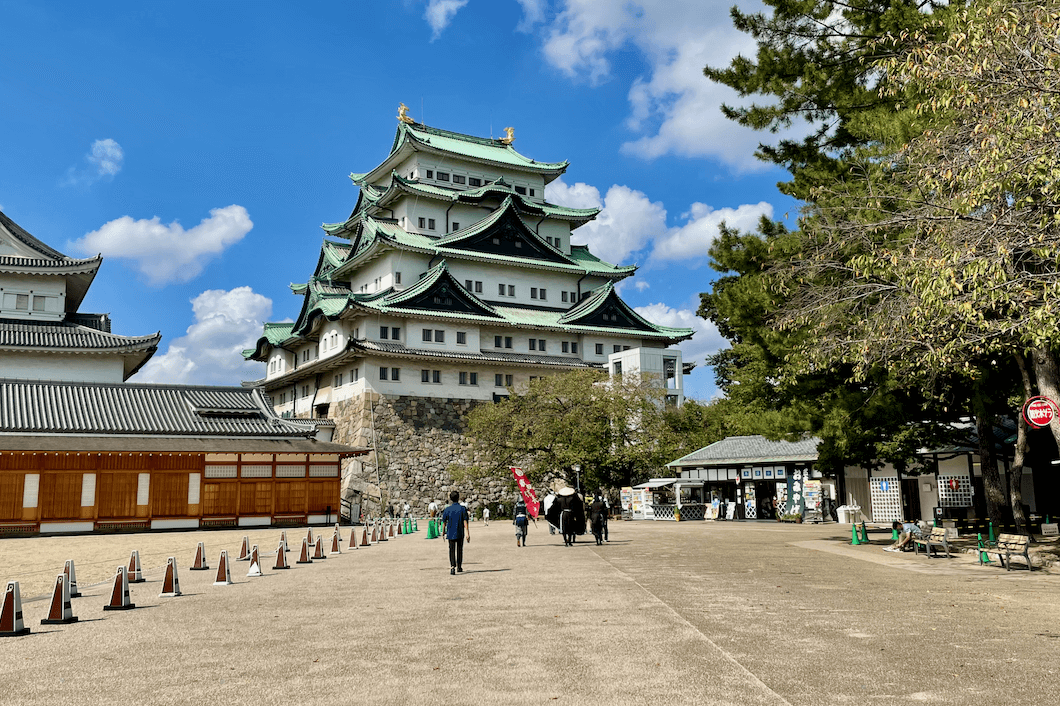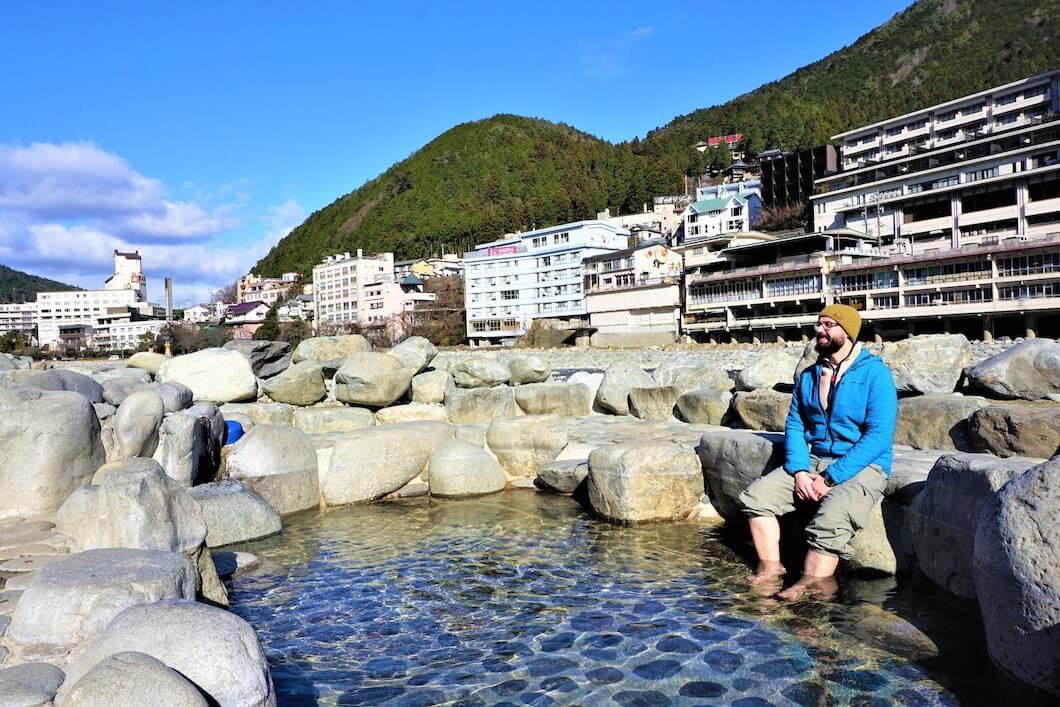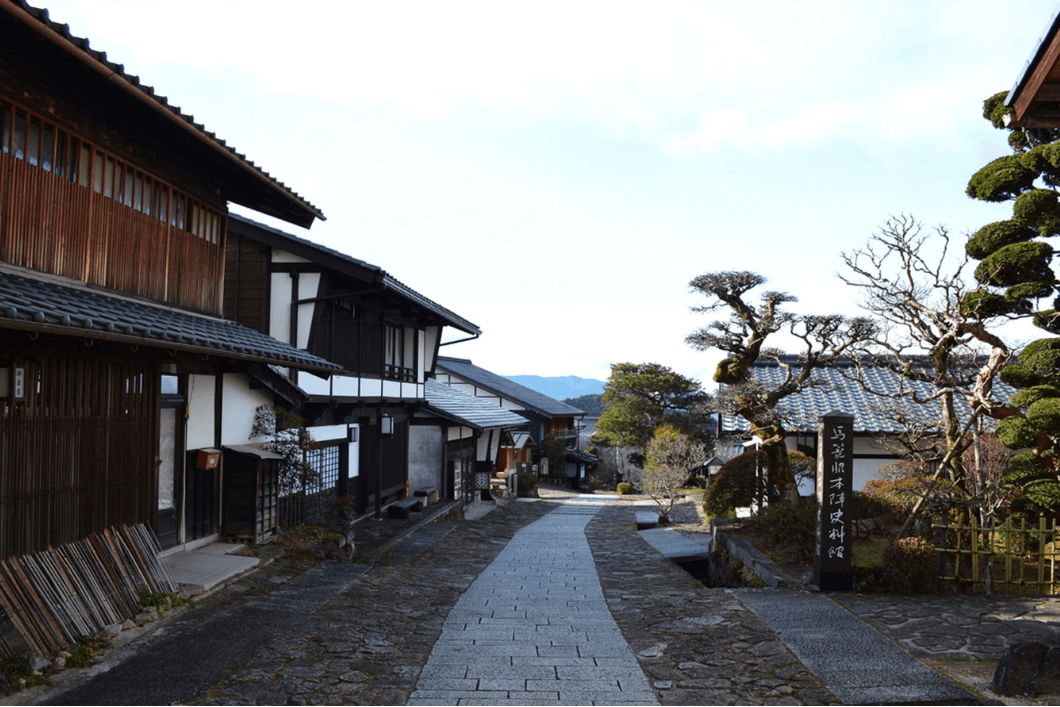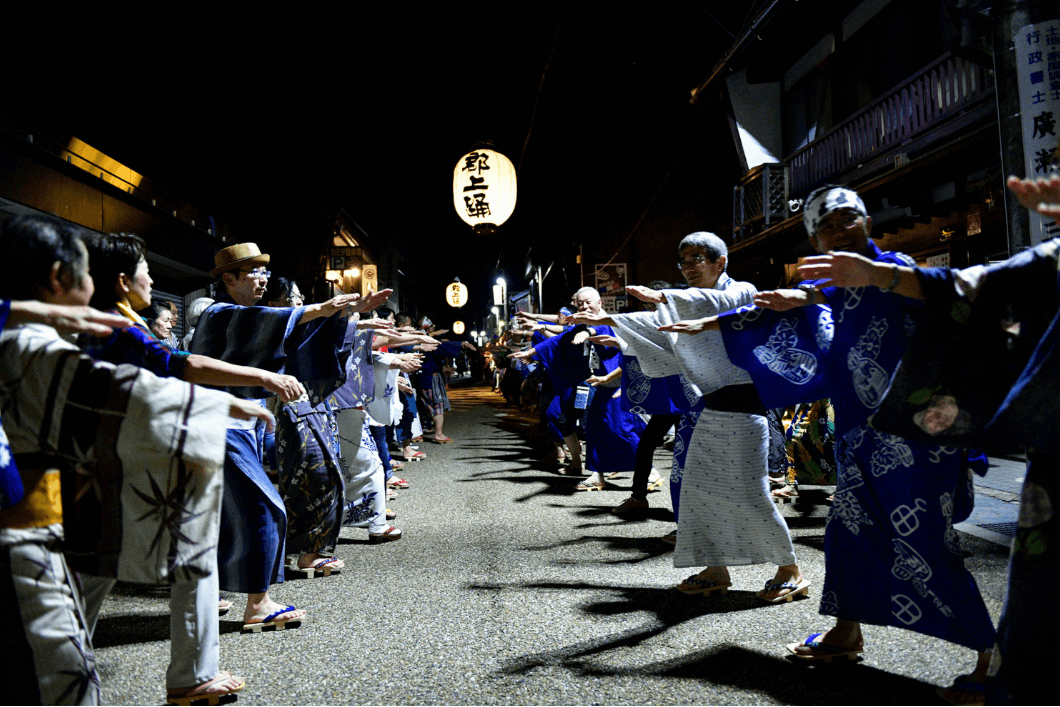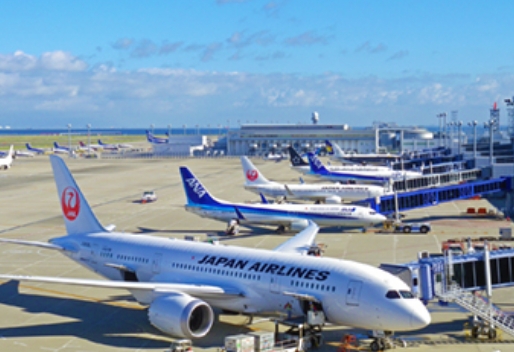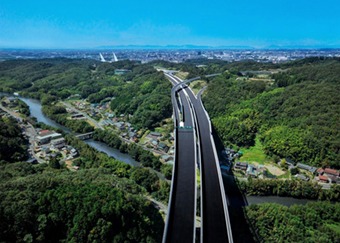The area that was once called Owari Domain in central Japan is home to some of Japan’s best known traditional culture, unique traditions and local crafts. Two places where you can experience this wonderful culture first hand are Gujo Hachiman in Gifu Prefecture and Inuyama in Aichi Prefecture.
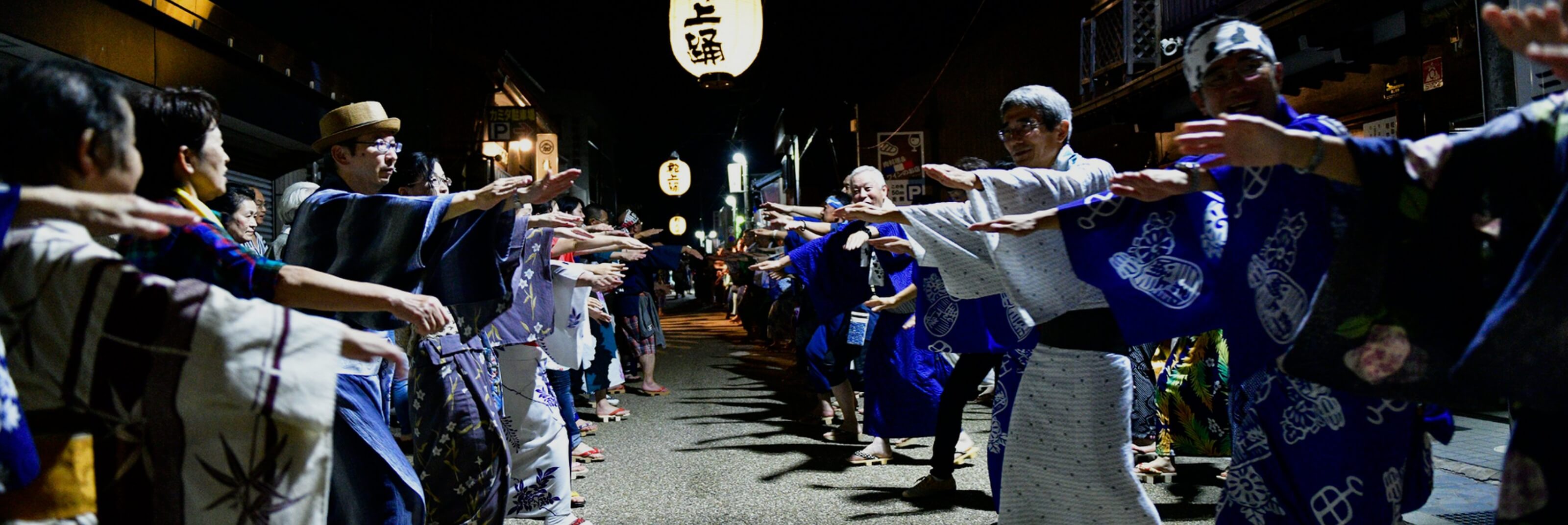
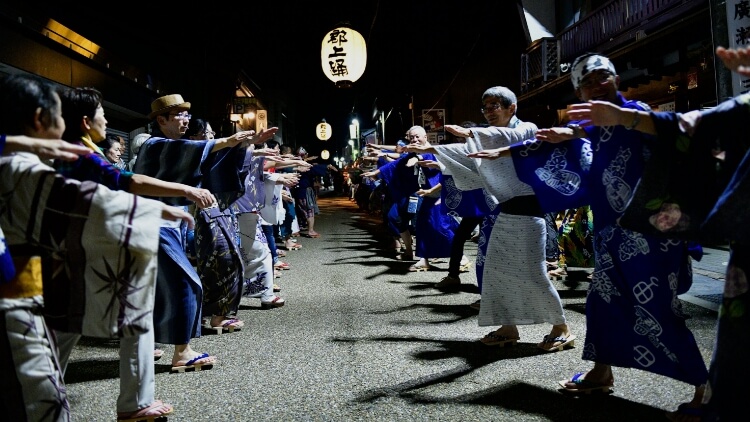
05Traditional Culture and Crafts of Owari Domain
Gujo Hachiman

Small path in town, Yanaka Ko Michi
Gujo Hachiman is a picturesque riverside town deep in the mountains of Gifu Prefecture famous for its traditional culture and local crafts.
There is a lot of unique culture to be experienced in this authentic old castle town with one of its biggest claims to fame being Gujo Odori, which is one of the 3 most important bon dance festivals in Japan.
Gujo Odori

Gujo Odori stage in front of an old government office
Gujo Odori is a massive street party that was started in the late 1590s by local feudal lord, Endo Yoshitaka to encourage all the people of his domain to get together and harmonize regardless of rank or social position.

Gujo Odori on the street
The Gujo Odori Preservation Association, headed by Mr. Fujita is responsible for maintaining and preserving this traditional dance. It was established in the early 1920’s to restore Gujo Odori after it had been prohibited during the Meiji Era (1868-1912). This year in 2022, the association will celebrate its 100th anniversary.
The preservation association has 53 members with multiple goals including trying to grow the group in order to preserve the performance skills of Gujo Odori such as the dance, songs, drums, and flutes, and to promote tourism to Gujo and the event overseas.
There are 10 traditional dances and corresponding songs that form Gujo Odori. The most well-known is a dance called Kawasaki, which is famous for its smooth and elegant dance moves.
Hakurankan Museum

Hakurankan Museum
A great place to learn all about Gujo Hachiman and its famous Gujo Odori is at the Hakurankan Museum. The building was originally built during the Taisho era in 1920 as a tax office and is an interesting mix of both the modern and retro. It is a great starting point for learning all about the town before going off to explore the local area on foot.

Gujo Odori lecture at museum
The museum is divided into four sections: water, history, crafts and Gujo Odori. The traditional dance is demonstrated 4 times a day here with visitors welcome to join in on the fun. The dance moves are very easy to pick up with lots of repetitive moves and you can simply learn by watching the demonstration and following along. The staff are dressed in traditional local yukata (light summer kimono) and geta (traditional wooden sandals) and will carefully instruct you as well as inform you about the stories behind the 10 types of dances, including the Kawasaki dance mentioned above.

Indigo dyeing exhibited at the museum
The Gujo Odori dance festival is held from mid-July to early September every year with the peak occurring during the Obon period in mid-August, where locals and visitors can enjoy four nights of all night dancing until the wee hours of the early morning.
Traditional Local Crafts in Gujo Hachiman

Indigo-dyed products
Gujo Hachiman is also known around Japan for its traditional local crafts. Gujo Honzome Dyeing which uses locally produced indigo dye has a history of more than 430 years and can still be seen today with many of the products produced in Gujo Hachiman featuring this traditional dyeing method.

The hinoki wooden sandal
The local businesses here in Gujo Hachiman were also involved in the Gujo Odori festival with merchants producing yukata, geta and tenugui (hand towels) used by the participants of Gujo Odori.

The wooden sandals with indigo-dyed strap
The wooden geta sandals were made with hinoki wood from the Kiso Valley area and the yukata and tenugui dyed using traditional techniques by local indigo dye masters.
Traditional Local Crafts in the Kiso Valley
The mountainous Kiso region of Owari Domain in central Japan is also famous for its local wood crafts with the area home to an abundance of timber due to its heavy forested mountains. The area's renowned Kiso-hinoki cypress is used for many of these wood crafts including Kiso Lacquerware.
Kiso Lacquerware

Kiso lacquerware bento box
Kiso Shikki (Kiso Lacquerware) is a specialty of Kiso Hirasawa and vicinity, a lacquer work area located in the Kiso Valley in central Japan. The historic town developed outside of the Edo period post town of Narai and has a history of more than 450 years. It has been selected as an Important Preservation Area for Groups of Traditional Buildings. Kiso Hirasawa developed along with the Nakasendo Highway producing various large and small lacquerware products such as tables, shelves, bowls, plates and chopsticks. In recent times, lacquerware products have been made using a variety of different materials such as metal, glass, and leather and became Popular with a wide range of generations. The medals for the 1998 Nagano Winter Olympics were made by artisans from this town.
Oroku Gushi

Oroku comb
Oroku Gushi (Oroku Combs) are a traditional craft made around Yabuhara-juku at Kiso Village, Nagano Prefecture. The beautiful combs are about 10 cm wide and amazingly for such a small comb, they consist of between 70-100 teeth. The combs are made from the minebari tree (Japanese green alder), which produces a hard wood only a true craftsman can work into a delicate comb.

Cutting fine teeth
The name of these amazing creations comes from a local legend. Long ago, there was a sick woman named Oroku, who brushed her hair from a comb made from wood from the minebari tree every day, and magically her disease was cured.
These combs as well as Kiso Lacquerware have been a popular souvenir from the area since the Edo period (1603-1868), when people made a pilgrimage to Mt Ontake and Zenkoji Temple via the Nakasendo Road, an old route that connected Edo (Tokyo) to Kyoto through the Kiso Valley.
Watanabe Somemono Traditional Indigo Dye Shop

Exterior of Watanabe Somemono Traditional Indigo Dye Shop
Back in the heyday of indigo dyeing during the Edo Period (1603-1868) there were many different family run indigo dye businesses in Gujo Hachiman. But after the Taisho Period (1912〜1926), their numbers gradually decreased. Today, only one remains, Watanabe Somemono Traditional Indigo Dye Shop.

Mr. Watanabe dyeing indigo
The Watanabe Indigo Dye Shop was established in 1580 with the current master craftsman, Kazuyoshi Watanabe, the 15th generation of his family to take up the business. With a history of over 400 years, this family run shop still painstakingly hand makes every item. During the Edo period, samurai clothing was the item of choice as the town flourished as a wealthy castle town. Today, many different items are produced that bring out the true beauty of indigo dye.

Soaking indigo-dyed cloth in water
From traditional tenugui, noren (entrance curtains), hanten coats for festivals, tapestry, and koi nobori (carp streamers) to modern-day bags, western-style stoles and masks, every item uses traditional techniques and materials to produce top quality products.
Mr. Watanabe draws every pattern for each item by hand, dyeing the product over and over with the greatest of care to produce unique and one-of-a-kind creations. He uses an old technique called tsutsugaki, where free hand designs are drawn onto the fabric using a homemade rice flour paste that resists the natural dye.

Indigo-dyed carp banners
There are few true indigo dye specialists operating in Japan today, who use natural indigo dye rather than the chemical dyes that are popular now. Natural indigo dye is said to repel insects and has been used in wrapping clothes and clothing since ancient times. The indigo dye is made from indigo grass from other parts of Japan.
With its dark blue tones, true indigo dye has become known as “Japan Blue” overseas, where it is extremely popular.
Every January, during the coldest day of the year, the traditional carp streamers are soaked overnight in the Kodara River. Mr. Watanbe uses the river’s cold, clean, fast running water to fix the colorful natural indigo dyes of his carp streamers, creating a wonderful sight for both locals and photographers from all over Japan.
Gujo Hachiman Castle

Gujo Hachiman castle
Gujo Hachiman Castle looms over the castle town below from the top of Mount Hachiman. It is only a short hike up to the top of the mountain, where you will be rewarded with breathtaking views of the town from above and surrounding mountains. The locals believe that the outline of the residential area below resembles that of a fish, which is fitting since the area is home to many delicious river fish such as ayu (sweet river trout).

View from the castle
The castle was established as a fort in 1559. The modern structure is a reconstruction built of wood in 1933. The castle keep is an important cultural property of Gujo City. The castle is a symbol of the town’s history and cultural heritage and is considered to be one of the most beautiful mountain castles in Japan.

Townscape of Gujo Hachiman
It is fun to walk around the old castle town below the castle, which is known as jokamachi in Japanese. You almost feel like you have taken a step back in time to the age of the samurai with the wooden buildings and traditional architecture. You can enhance the experience by dressing in a yukata and geta and slowly stroll the streets to fully soak up the atmosphere.
Inuyama
Like Gujo Hachiman in Gifu Prefecture, Inuyama in the northwestern part of Aichi Prefecture is another place in central Japan well known for its history and culture. The picturesque Kiso River, which flows down from the Kiso Valley in Nagano and Gifu through Aichi ensured that the castle town prospered as a key junction during the age of the samurai. High-quality timber from the Kiso region was transported down the Kiso River past Inuyama and on to the Port of Nagoya.
Many battles were staged around this area during the Sengoku period (Warring States period), where Inuyama developed as an important castle town.
Inuyama Castle
Inuyama Castle has the oldest original donjon still remaining in Japan. It's built almost entirely out of wood and rocks. The interior of the donjon is beautifully preserved giving you an authentic look at a samurai-era castle that has not changed in hundreds of years. The castle is one of only five in Japan that have received National Treasure status.
The Inuyama Festival and Karakuri Dolls

Inuyama Festival
The Inuyama Festival is held every spring in Inuyama during the first week of April when the cherry blossoms are in full bloom. It first started in 1635 as the annual festival of Haritsuna Shrine, and features 13 massive antique floats, which stand close to 3 stories tall.

Karakuri dolls on the top of a float
On the top tier of the impressive festival floats are Inuyama Karakuri Dolls, which have been passed down since the Edo period (1603-1868). These mechanical puppets are operated by participants inside the floats and perform amazing tricks and dances to the beat of the festival music provided by flutes and drums.
The traditional puppets are controlled by hand and mesmerize the crowds with their lifelike movements. In 2016, the Inuyama Festival was granted UNESCO Intangible Heritage status.
Gujo Hachiman and Inuyama are two off the beaten track destinations that offer visitors the chance to experience an authentic Japanese castle town that retains its unique culture and crafts from a bygone era.

